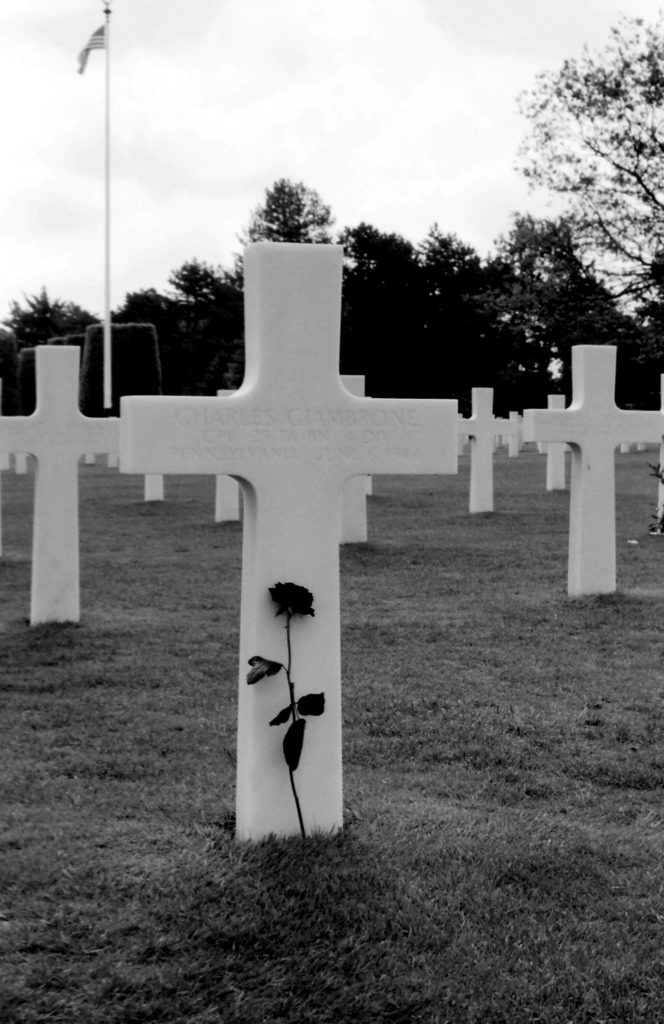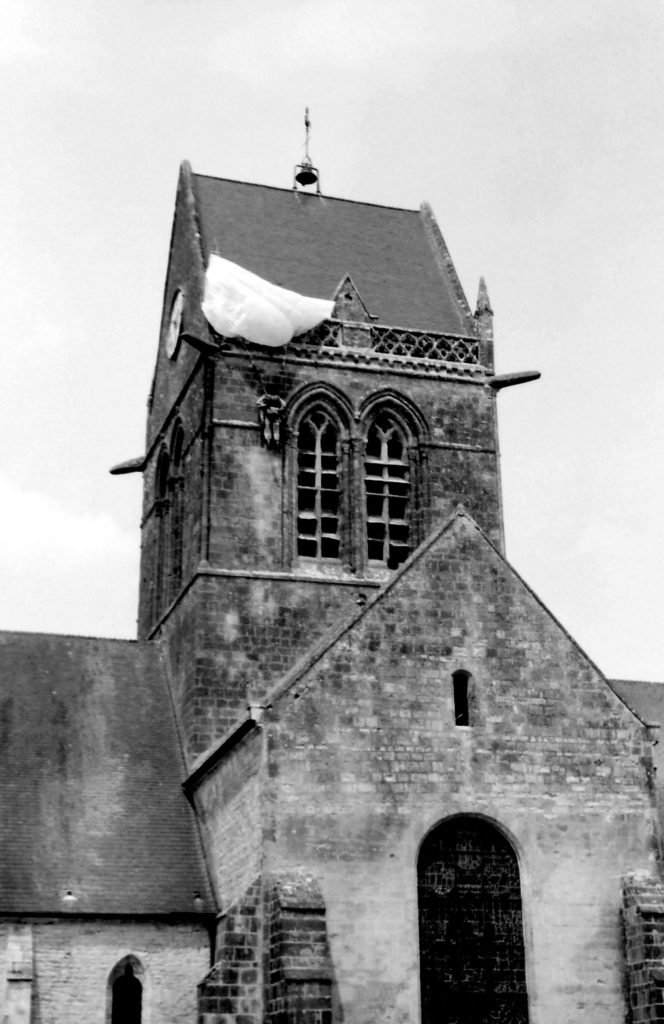
For those that weren’t there, D-day will always be a concoction of movies like The Longest Day, A Bridge too Far, Saving Private Ryan, etc. mixed with stories from books, and in my case the 11 photographs by Robert Capa, that in my mind are among the most mind blowing photographs ever taken.
As we park our car and walk into the centre of Sainte-Mère-Église, on the 5th of June, we are immediately taken by the carnival atmosphere in the small town. I don’t know what I expected, but what I clearly failed to understand was that for the French June 5th, 1944, and the many days that followed from town to town, was a celebration. A party.

I am sure the local population thinks every year about all the sacrifices that were made to liberate their towns The locals were people that for the better part of 5 years had been under the thumb of the Germans. Over the 5 years leading up to the 5th of June, the Germans were either preparing for invasion and laying out their coastal defences. The villages must have been crawling with Germans. And then one night there was deliverance from the sky in the form of hundreds of parachutists that were to help hold the bridgehead, when on the 6th of June the main landing would take place.
The local people of Sainte-Mère-Église dress up in period costume, they wear fatigues, the women and girls wear dresses in the style of the 1940s, they set up stands selling anything and everything that could pass as a souvenir, or could be consumed in the form of food and drink. But don’t misunderstand. They honour the allied soldiers that came to their rescue and they mourn those that never made it off the beach.

Canadians, British and Americans come here to mourn their dead and honour those who survived the greatest amphibious landing in history, ultimately leading to the downfall of yet another tyrant set on global domination. Those that were there come to remember those that made the ultimate sacrifice, those same men who to this day cannot understand why they are still alive when their comrades fell by the hundreds and thousands.

On the 5th of June we watched as the large Hercules aircraft dropped hundreds of parachutists in a field near Sainte-Mère-Église. A parachute jump organized across regiments and nations that participated on that fateful day 75 years ago. As the parade passed along the streets to the main square, where the famous parachute still hangs each year from the top of the church with a dummy representing the famous parachute drop that was a little too close to town, so prominently part of the famous story that became The Longest Day.


We honour those that made it ashore and lived to fight another day, ultimately making it to Berlin and ending what was perhaps the greatest risk to the freedom and democracy, that we enjoy today.

On the 6th of June, we visited the beaches, walked through the cemeteries and at one point stood above a beach, where a single solitary figure stood hunched over, only a few feet from the water’s edge. No, I didn’t take the photograph, nor did I go closer. This was a veteran that needed to be alone and to remember his friends. Those that did not survive the day.

This is neither the time, nor the place to play politics, or pontificate, however, it seems to me that we are standing at a time when democracy is at great risk in many places around the world and it behooves us to remember and to make sure that the men that landed on D-Day did not do so in vain.
Harbel

